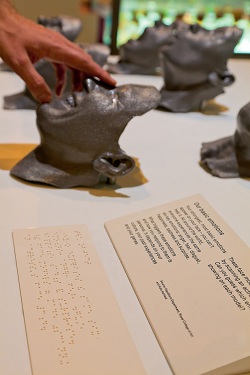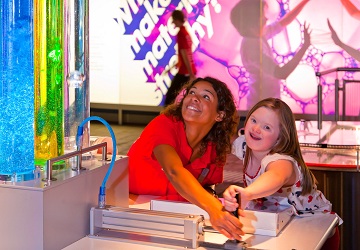Ross Calladine, VisitEngland’s Head of Business Support, provides some top tips for increasing your share of this lucrative market. The article is based on a presentation given by Ross at the Museums and Heritage Show 2013. England’s accessible tourism market is responsible for 11 million domestic trips, half a million international visits and generates a total spend of over £2 billion each year.
Improve your access
- When seeking to improve and market your accessibility, input from Access Advisors, Disability Groups and Tourism Specialists such as Brian Seaman at Access New Business is invaluable. You could also look to build relations with local Disabled Persons Organisations; many are listed at www.accessgroupresources.co.uk.
- Naming an Accessibility Champion among your staff is an effective way of spreading disability awareness. They can be responsible for co-ordinating the agenda on accessible activities, inspiring colleagues with a clear action plan.
- One in six people in the UK have some form of hearing loss. That’s ten million potential visitors, yet research undertaken by Action on Hearing Loss found that only three of London’s top 20 attractions had useful hearing loops. Read Listen Up! for tips to help welcome customers with hearing loss and ask your visitor attraction scheme assessor to demonstrate loop testing during their annual visit.
- Providing a changing places facility can make a huge difference to those with higher level needs and although this requires a financial investment, match funding may be available from your local council.
- A Sensory Room with low sensory stimulation can provide a calming place for autistic children. A great example here is Eureka! National Children’s Museum.
- Where physical access is restricted, take advantage of new technologies to deliver a visitor experience to those with access needs. BALTIC and Hever Castle both provide great virtual IPad tours.
- VisitEngland and DisabledGo offer online disability awareness training. It is important that staff have the knowledge and confidence to meet the needs of the disabled visitor. As of July 2013, VisitEngland has 500 places available (up to five per business) for a course spread out into six modules taking a total of one to two hours.
- Running dedicated sessions can help to directly engage with disabled groups. These specially tailored activities can be done in a variety of ways. The Deep in Hull, for instance, runs Quiet Days with specially adjusted sound and light levels, British Sign Language presentations and multi-sensory interactive experiences, while the Sandcastle Water Park holds accessible coffee mornings to encourage group visits with Q&A sessions and tours.
- Remember the importance of tactile interpretation. Tactile maps are used in the Roald Dahl Museum giving visually impaired visitors a sense of orientation. Having objects that can be touched, such as the Saturn 5 rocket in the Science Museum, also adds a great deal to user experience.
- Visiting museums with disabled children can be daunting so make visiting as fun and stress-free as possible. Eureka! helps by offering a free ‘Extra pair of Hands’, where a dedicated member of staff can lend a helping hand for two hours.
Developing and promoting your Access Statement is essential. An Access Statement is a detailed description of facilities and services that enables your customers to make an informed choice; it’s a great promotional opportunity to reach customers with access needs too. VisitEngland has a free online tool for you to use. For a good example with clear photos helping show the level of accessibility, see The Lakeland Motor Museum.

For many visitors, your website will be the first port of call. Increase the chances of a visit by providing a good ‘Access for All’ section on your website. Clearly signpost to it from your homepage making all the access information accessible from one place. Avoid using words like ‘disabled/disability’ in the title as not everyone with an access need will identify themselves as being disabled. Ensure that your Access Statement is both downloadable as a Word document and that the information contained in the section includes images and videos of those with access needs, representing the diversity of visitors. Two good examples of this are the Beamish Museum and the SS Great Britain.
A great way to make your attraction more appealing for autistic visitors is to provide a pre-visit guide. This will help visitors to prepare and organise a visit by using photos and plain English to describe textures, colours and smells. Involve local parents of autistic children to ensure the guide meets their needs.

We believe that such efforts should be rewarded, so why not apply for an Access for All Award from VisitEngland and boost your accessible credentials further? See Sandcastle Water Park, which was the VisitEngland Gold Winner for 2013 as an example and Great North Museum: Hancock, 2012 Gold Winner.
There are plenty of online resources for you to get more tips on maximising your appeal as a museum or heritage attraction that meets access needs. To keep up with developments and innovations in museums and galleries go to www.museumsassociation.org/museum/access-and-outreach.
www.visitengland.org/access is a good place to start; so too is www.tourismforall.org.uk.
Back to top




